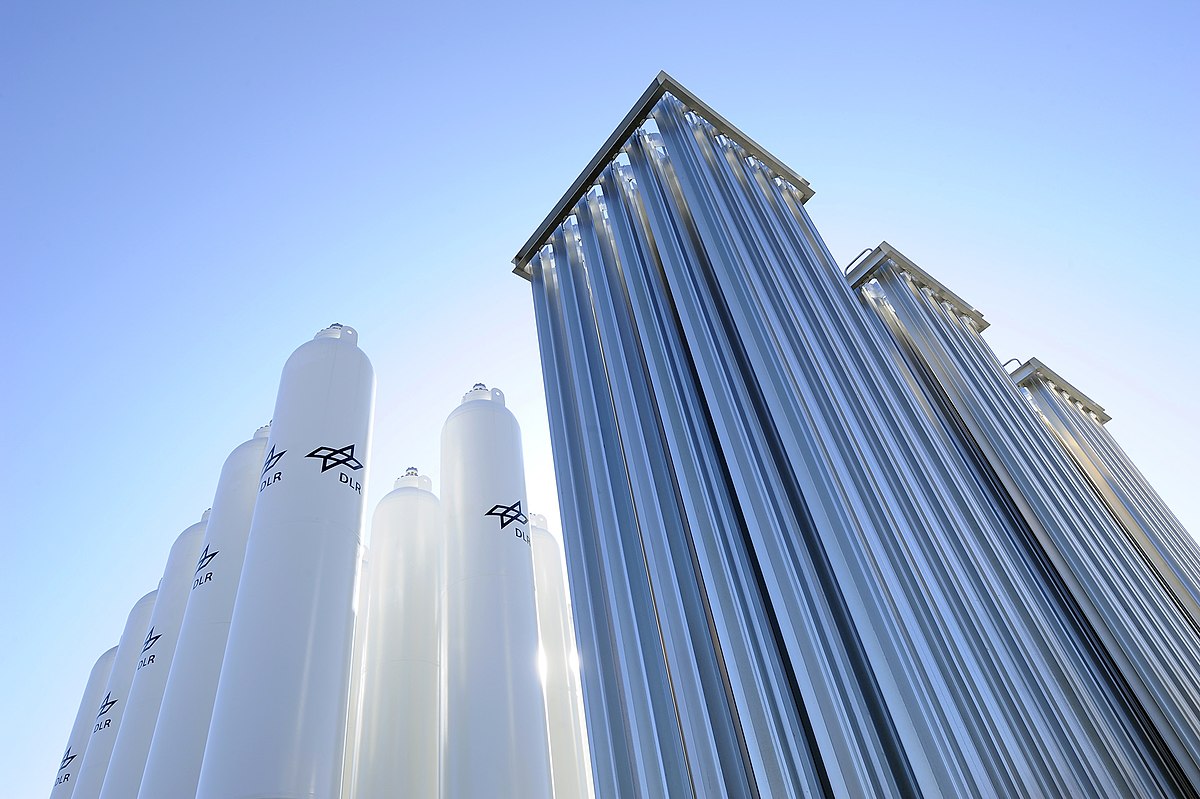A group of European researchers led by the European Technology and Innovation Platform for Photovoltaics (ETIP-PV) has sought to assess the capital (CAPEX) and operational expenditure (OPEX) of hydrogen electrolysis powered by utility-scale solar for the next three decades and have predicted the cost of the green fuel may drop from around €0.031-€0.081/kWh currently to €0.02-€0.05 by 2030 and €0.01-€0.027 by 2050.
”We witness unprecedented growth of green hydrogen due to enormous pull on the demand side to opt for real solutions and a massive decline in utility-scale green hydrogen cost, driven by very low-cost solar PV and electrolysers,” professor of solar economy at the Lappeenranta University of Technology (LUT) in Finland, Christian Breyer, told pv magazine. “Huge business opportunities arise right now, for companies and countries, but only smart decision-makers in industry and policy will benefit.”
The projected cost decrease will be the result of a simultaneous price drop for both electrolysis powered by large-scale PV and the CAPEX of solar itself, according to their analysis, which was based on historical learning rates (LRs) for both technologies and a series of different growth scenarios. “The levelized cost of hydrogen (LCOH) is calculated for five European and five non-European locations with different solar irradiation levels and with several weighted-average cost of capital (WACC) rates,” they specified.
The set of locations include Helsinki, Finland; Munich, Germany; Toulouse, France; Rome, Italy; Malaga, Spain; Rajasthan, India; El Paso, Texas, USA; Western Australia; South Africa; and Chile's Atacama Desert.
Solar
The average CAPEX for utility-scale solar was calculated under three different scenarios: A fast growth scenario in which it is predicted to fall from around €0.047/kWh currently to €0.027/kWh in 2030 and €0.013/kWh in 2050; a base growth scenario in which this value should drop to €0.031/kWh in 2030 and €0.019/kWh in 2050; and a slow growth scenario where it reaches only €0.036/kWh in 2030 and €0.025/kWh in 2050.
The scientists assumed that every year the average module price may decrease by a conservative 25% and that average module efficiency improves by 0.4%. The OPEX in 2020 was estimated at €9.4/kW per year and it is assumed to decrease with 10% LR annually.
Electrolysis
As for large-scale electrolyzers, the researchers found the CAPEX in the fast growth scenario may drop from €400/kW in 2020 to €230/kW in 2030 and €60/kW in 2050. Furthermore, they expect this price fall to reach €260/kW in 2030 and €80/kW in 2050 in a base growth scenario and €280/kW in 2030 and €130/kW in 2050 in a slow growth scenario.
Popular content
“The state-of-the-art efficiency for alkaline electrolyzers is reported as 67%, which is assumed here to increase by 0.3% points per year to 76% by 2050,” the group further explained. “Costs of catalysts are not regarded as critical because nickel is the most common electrocatalyst in alkaline water electrolysis.”
LCOH
In calculating the LCOH, the research team assumed that a PV plant is oversized in relation to the electrolyzer input power at a ratio of 1.33. Under this configuration, electrolyzers have 33% more full load hours (FLHs) compared to the PV yield in each location. A first-year 2% degradation and annual 0.5% degradation is estimated for the PV plant yield and an annual efficiency degradation of between 0.10 and 1.50% is assumed for the electrolyzer.
The academics specified that the current LCOH of solar-powered hydrogen currently reaches its lowest level of €0.031/kWh in the Atacama Desert in Chile, which is the region with the highest level of solar radiation in the world, and the highest value of €0.081/kWh in Helsinki, which is the region with the lowest radiation among the chosen locations. “By 2030 LCOH will decrease by about 33% and by 67% by 2050,” they emphasized. “It is notable that the cost of PV-generated electricity is already about 63% of the LCOH, increasing to about 74% by 2050. This suggests that electrolyzer CAPEX will not play a major role in the future LCOH development.”
According to the researchers, the LCOH will decrease to between €0.020 and €0.054/kWh or €0.7 and €1.8/kg by 2030 and €0.010 and €0.027/kWh or €0.3 and €0.9/kg by 2050. “Already during this decade, solar hydrogen will be globally a less expensive fuel compared with hydrogen produced from natural gas with carbon capture storage,” they concluded. “Best solar resource sites in the world reach full competitiveness of green hydrogen versus fossil methane-based hydrogen even without fossil carbon capture, today,” Breyer added. “Time for window-dressing and greenwashing is gone and major industries, such as steelmaking, chemical industry, marine shipping and aviation have to deliver real transition strategies to react on massive policy and investor pressure.”
Their findings and the associated methodology are described in the paper “The True Cost of Solar Hydrogen,” published in RRL Solar. The research team comprises scientists from the Lappeenranta University of Technology (LUT) in Finland, the Basque Research and Technology Alliance (BRTA) in Spain, Italian research institute Eurac, the European Commission's Joint Research Centre (JRC), and the Becquerel Institute in Belgium.
This content is protected by copyright and may not be reused. If you want to cooperate with us and would like to reuse some of our content, please contact: editors@pv-magazine.com.



It”s a pretty safe bet that nobody will be shipping expensively liquefied hydrogen to Helsinki in 2030, and not that much will be produced locally from Baltic wind and occasional local sun. For the two high- probability markets for green hydrogen, iron and fertilizer, logistic costs point to relocating production to sunnier climes and shipping the denser and less problematic output.
LUT missed out two other prime locations for making green hydrogen: Mauritania and NE Brazil. Vale already ship iron ore in huge volumes using a dedicated railway. Adding a DRI iron smelter would tap the region’s equatorial sun (though with regular clouds) and offshore wind.